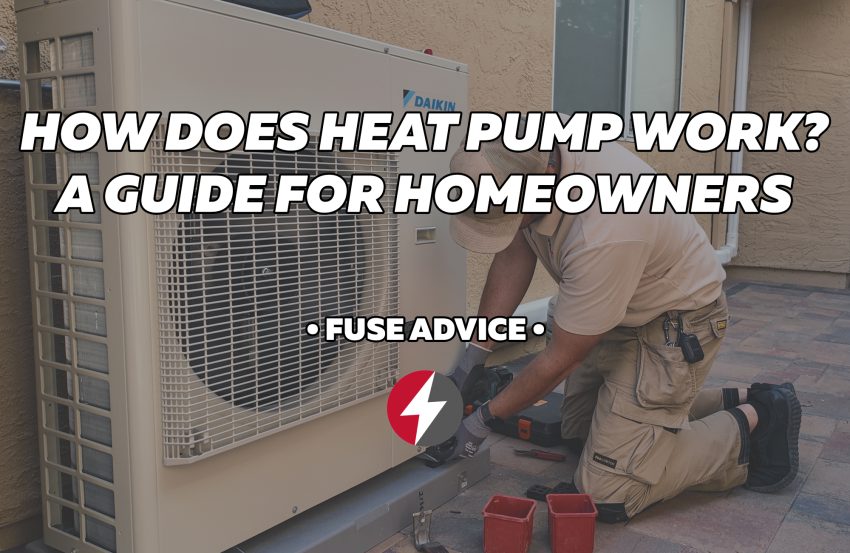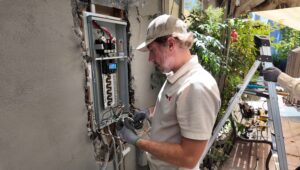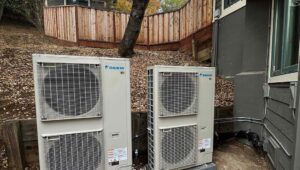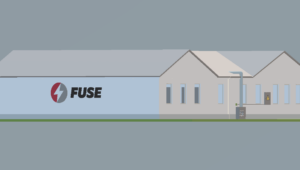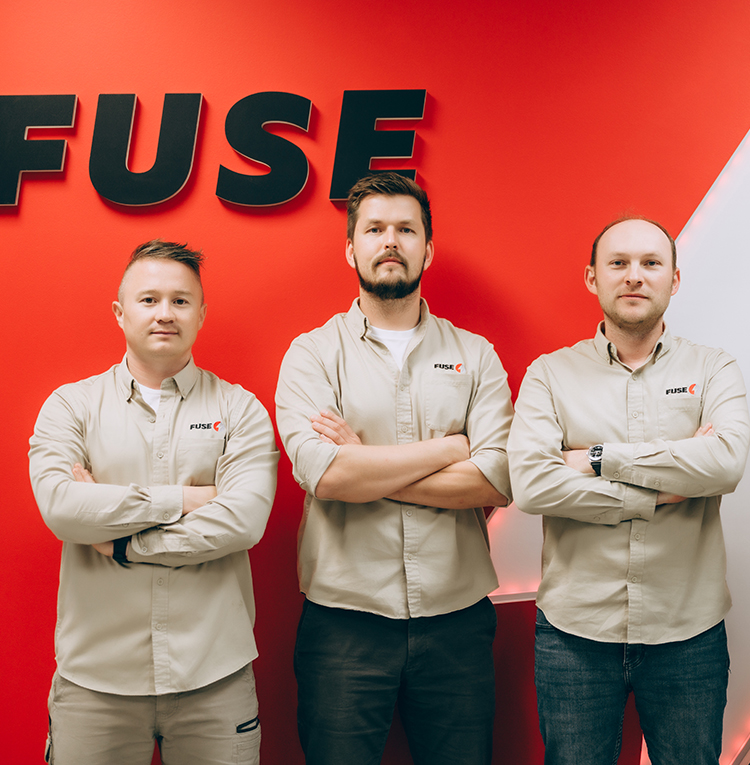We won’t be saying something new when we say that everybody wants to live comfortably without paying too much for it. To keep your home warm and save money on energy bills we often advise homeowners to get a heat pump. In this article we will explain all basics you should know about heat pumps and whether they suit your perfect home.
What Is a Heat Pump?
The principle of its work is simple – a heat pump transfers warm air from one place to another cold place and vice versa. That allows for two things at once: cool one space and heat another. While a furnace or an air conditioner creates cold or hot air, a heat pump just uses existing air and makes all this process much more energy-efficient. So in winter the heat pump simply “collects” heat from outside, even though it is cold, and transfers it inside. When summer comes it changes everything upside down and the heat pump “removes” hot air from your home. Then this air released outside. Let’s discuss the main three types of heat pumps there are:
- Air-source heat pumps. These heat pumps are the most popular ones. Such pumps pull heat from the outside to regulate your home temperature. They are commonly available and relatively easy to install.
- Ground-source (geothermal) heat pumps. These pumps use the temperature of the ground. Around the year it’s stable, so it will bring hot air in winter and cool in summer. It’s more expensive than the previous one, but more efficient and saves a lot of money on energy bills.
- Water-source heat pumps. We mentioned heat pumps that work with air and the ground. Logically, the next element is water. Water-source pumps use the heat of the closest water resource like a lake or pond. It’s not that popular but could be a great solution in certain places.

How Does a Heat Pump Work?
Let’s refer to basic physics. All of this heating stuff is based on the refrigeration cycle with the heating-cooling processes you need. So here is a closer look at the components which make the magic real.
- Evaporator. No, it’s not a name for sci-fi guns. This device absorbs heat from the air or ground outside. When refrigerant inside takes this heat, the evaporator turns the liquid to gas and the energy is released.
- Compressor. That’s our helper for the next stage. We already have gas but we don’t have warm air. This device simply compresses the refrigerant gas. Thermodynamics says that this will lead to temperature rise. And this is exactly what’s happening! The gas becomes really hot.
- Condenser: For the next stage comes the condenser. It helps the hot gas to release from compressed refrigerant to your indoor space.
- Expansion valve: The last thing to do is make the system ready for the next cycle. This valve lowers the pressure of the refrigerant. Thermodynamics says that this will cool it. Now, the refrigerant is back to absorb more air and start the cycle all over again.
Heating Mode and Cooling Mode. What’s the difference?
- Heating Mode.Heat pump pulls air from outside, evaporator absorbs heat, compressor rises temperature and condenser releases it. The heat pump pulls heat from outside and brings it inside. The evaporator absorbs heat, the compressor raises the temperature, and the condenser releases the heat indoors to warm your home.
- Cooling Mode: Now let’s play it back. In this mode heat pump absorbs the hot air inside and releases it outside, so your space is getting cooled down.
What’s the Benefits?
- Energy Efficiency. The first and most important thing is that the heat pump saves you money. As we said in the beginning, this device doesn’t create heat but transfers it. While furnaces which transform electrical energy into heat, pumps use electricity to move its parts but everything else is done by thermodynamics laws only. And that’s why you’ll lower your energy bills.
- Year-Round Comfort. Nevermind the name, heat pumps can also cool down the environment. With this device you won’t need separate HVAC units for summer and winter. Buying only one is much cheaper than buying two.
- Environmental Friendliness. You don’t need any chemicals to run heat pumps, only electricity. And nature will appreciate lower carbon impact. You can make it even greener if you use solar panels and other appliances that run solely on electricity.
- Long Lifespan. With proper maintenance a heat pump can work for a really long time– up to 15-20 years. No doubt that will pay off its price.
- Low Maintenance: The last but not the least. Everything you need is cleaning filters and occasional check-ups. Much easier than traditional systems, right?
Potential Drawbacks of a Heat Pump
- Upfront Cost. It might seem quite expensive at first sight, especially if you are considering ground and water pumps. However, energy savings will pay you back every cent spent.
- Efficiency in Cold Climates. Classic air pumps may not be that efficient in very cold weather. Good news that new models are much better at dealing with it. But keep in mind that if you’re in Alaska, you may need some more heating resources than just a heating pump.
- Installation Challenges. That’s a big part of what makes the price for ground and water heat pumps. Installation includes digging or drilling which raises the cost.
Is a Heat Pump Right for You?
Keep in mind the following while deciding about new heat pump:
- Climate. Mild climate works best with air heat pumps. Otherwise, in a cold climate it’s better to choose ground or water heat pumps.
- Energy Costs: Take a look at your bills. Your heating system takes too much? Then it’s the right time to get a new heat pump.
- Environmental Impact: Care about nature? Heat pumps do as well. It’s the greenest choice at the moment!
To Sum Up
Thanks to the principle of its work, heat pumps are cheaper in operation, greener and more efficient. Different types of heat pumps work for different climates. And even though it might seem expensive, energy savings will pay you off! If you would like to get one for your home too, we are your best choice for heat pump installation in San Jose CA. Reach out to us via (669) 666-9185 or support@fuseservice.com. Looking forward to making your life more comfortable!
